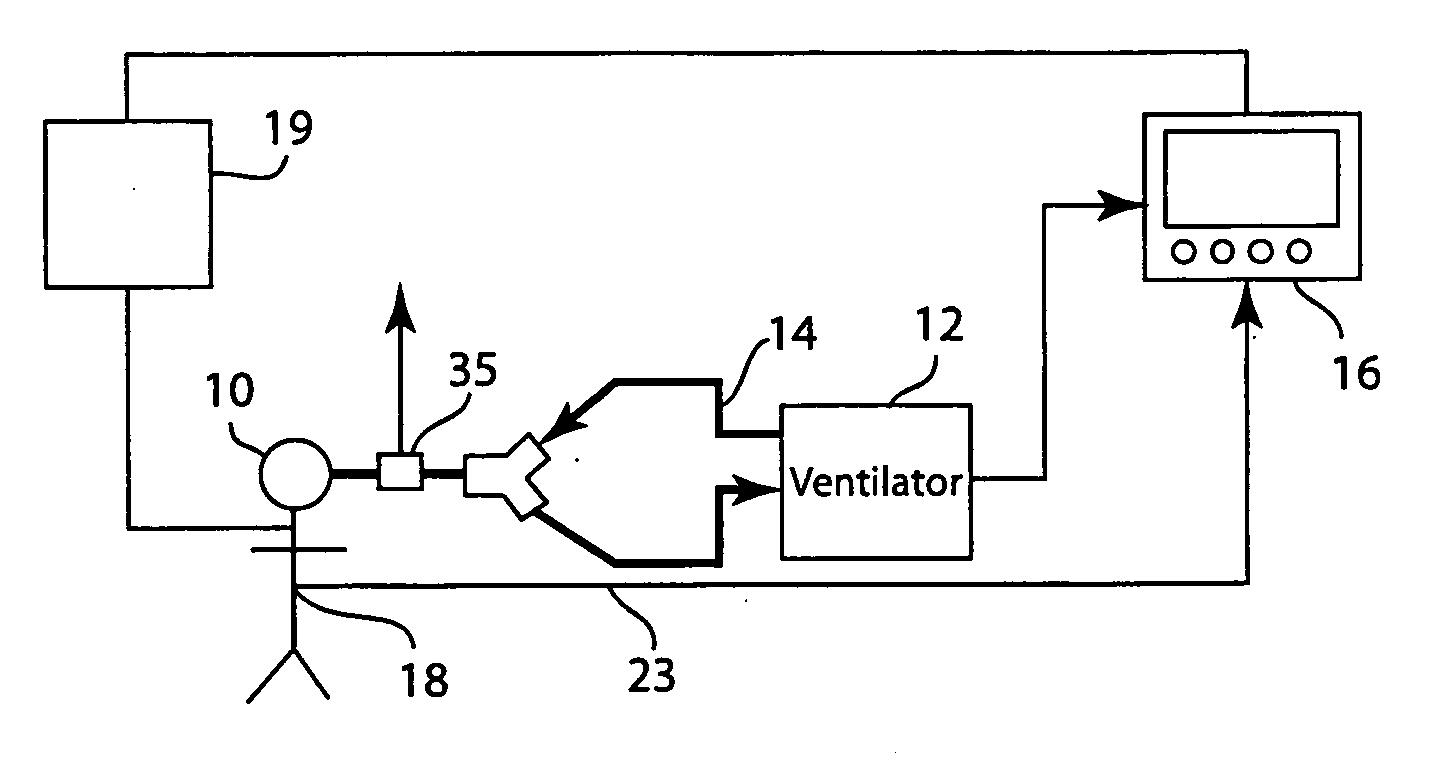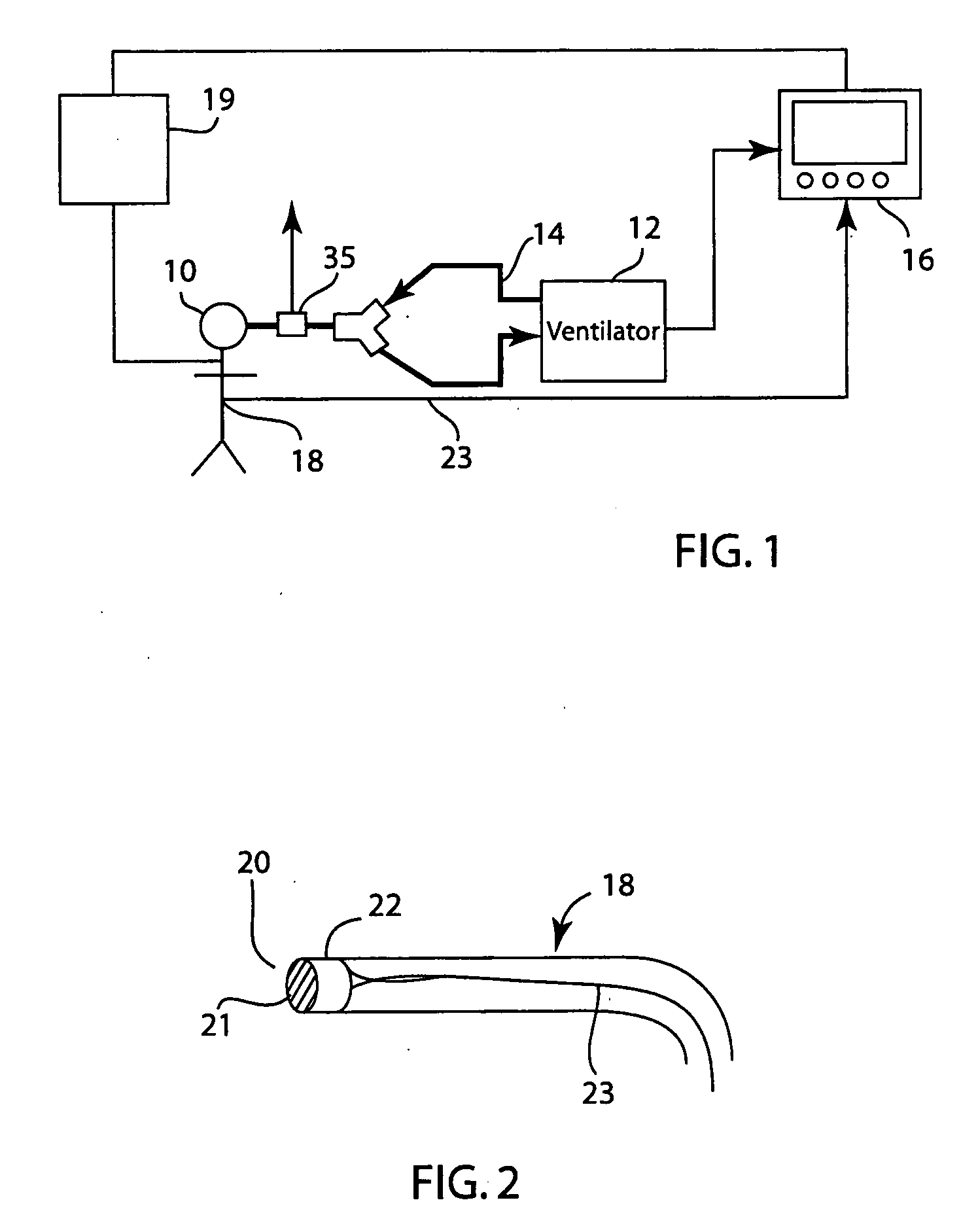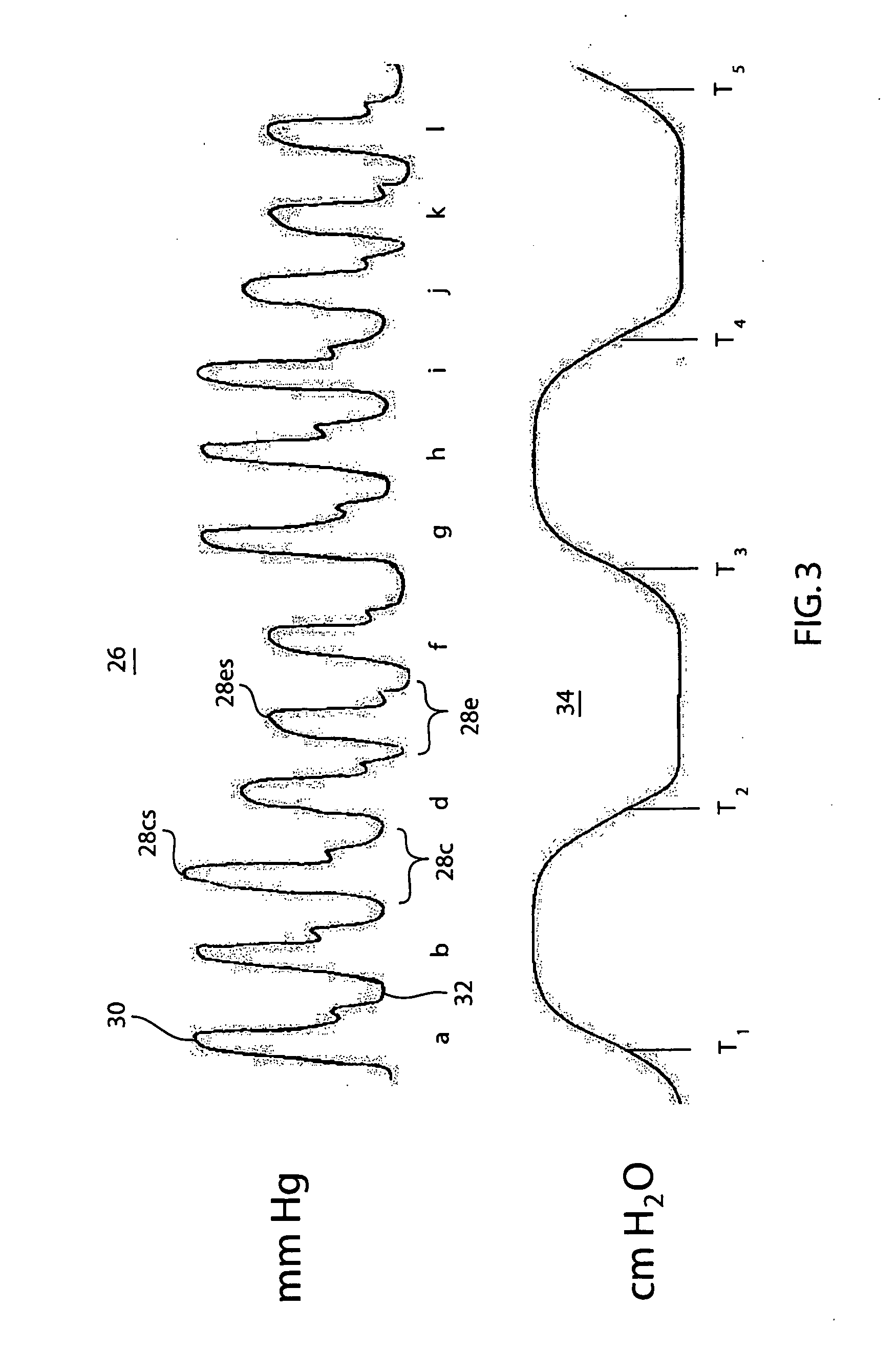Method for determining a cardiac data characteristic
a cardiac data and characteristic technology, applied in the field of cardiac data characteristic determination, can solve the problems of preventing the patient monitoring system from properly communicating with the ventilator or breathing gas sensor(s) being used, limiting compatibility, and blocking the receipt of some information by the patient monitoring system
- Summary
- Abstract
- Description
- Claims
- Application Information
AI Technical Summary
Benefits of technology
Problems solved by technology
Method used
Image
Examples
Embodiment Construction
[0018]FIG. 1 depicts patient 10 connected to mechanical ventilator 12, breathing circuit 14, and patient monitor 16. Monitor 16 obtains blood pressure data from the patient 10. For this purpose, catheter 18 may be inserted in the circulatory system of patient 10. The patient's brachial artery is often used, but it is understood that arterial blood pressure may be taken from any major artery, including the femoral artery or radial artery.
[0019] Monitor 16 may also be connected to other monitoring or treatment equipment for patient 10, shown in FIG. 1 as 19.
[0020]FIG. 2 depicts a catheter 18 capable of transducing invasive arterial blood pressure. The catheter 18 comprises a tip 20 with a diaphragm 21 and a sensor 22. It is understood that a number of different types of sensors may be used in catheter 18 including a strain gauge, linear-variable differential transformer, variable inductance, variable capacitance, piezoelectric, or semi conductor devices. The signal from the catheter...
PUM
 Login to view more
Login to view more Abstract
Description
Claims
Application Information
 Login to view more
Login to view more - R&D Engineer
- R&D Manager
- IP Professional
- Industry Leading Data Capabilities
- Powerful AI technology
- Patent DNA Extraction
Browse by: Latest US Patents, China's latest patents, Technical Efficacy Thesaurus, Application Domain, Technology Topic.
© 2024 PatSnap. All rights reserved.Legal|Privacy policy|Modern Slavery Act Transparency Statement|Sitemap



